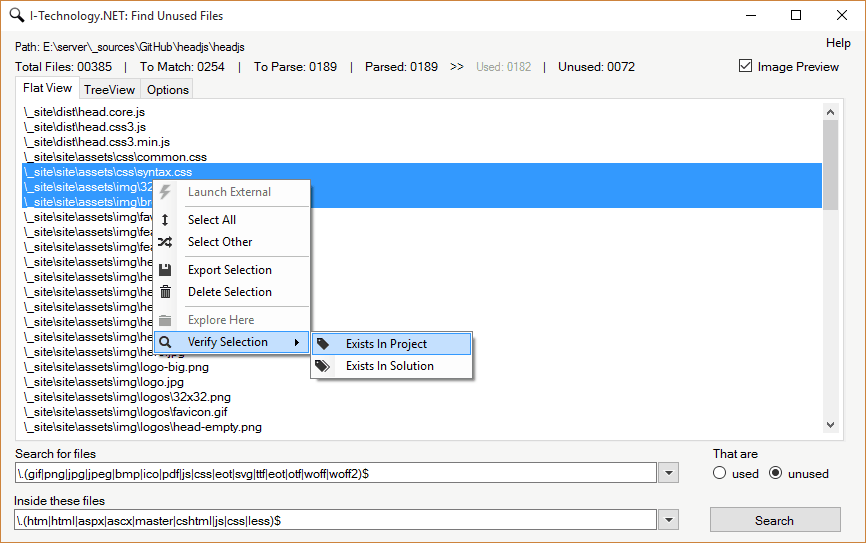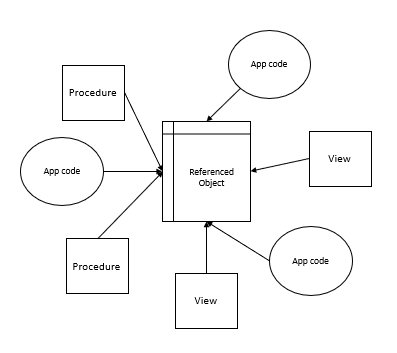Find-unused README Find and delete unused static resource, press F1 or ctrl+shift+p, then enter findUnused find to find unused static files, then the files will be listed in unused.md. Check the file list carefully and delete the line that the file you still need. A Visual Studio Code extension for displaying all unused exports in a typescript/javascript project. Installation Launch VS Code Quick Open ( Ctrl+P ), paste the following command, and press enter. The tool NDepend can help you to find unused code. You can edit the following 3 Code query Language (CQL) queries to detect unused methods, fields and types. These 3 queries can be customized to your exact need. Notice also how these queries are prefixed with WARN IF Count 0 IN, that transform them from CQL queries to CQL rules.These CQL rules can be checked in your CI environment, or even.
Feature Requests, Contributions, Bug Reports, Source-Code: GitHubTorrent mac net. The standalone application can be found here (works from the command line and explorer context menu). You can also have a peek at my initial article over on CodeProject if you like. Find Unused FilesVisual Studio 2012/2013/2015 Plug-in Find and eliminate unused images & files in web projects/applicationsThis extension helps you parse a website solution or project to find and eliminate unused images or other orphaned file types that are not being referenced in your sourcecode anymore.Files can actually be of any type, but will most likely be images that you wish to remove from a website you are working on. Flat ViewTree ViewFile/Folder ExclusionsThumbnail PreviewParsing DialogWindows Explorer (context menu)Visual Studio (context menu)-->Manual |Change Log |
R-CORE Unused CSS Classes Plugin. Highlights the unused css classes looking for html files in the same folder as the css/scss/sass files. Automatically highlights the unused css classes when opening styles files. Release Notes 1.0.7. Improvement: Now detects classes like: myClass:hover, myClass:focus, myClass:nth-child, etc. The Remove Unused Usings option in the Visual Studio user interface removes using directives, using aliases, and extern aliases that are not used in the source code. There are two ways to call the operation: Main Menu - On the Edit menu, point to IntelliSense, point to Organize Usings, and then click Remove Unused.
Visual Studio 2017 Find Unused Code

ReSharper | Find | Optimize References…
Control+Alt+YReSharper_OptimizeReferences

This feature helps manage your existing project/assembly references, browse usages of the referenced projects/assemblies, and remove unused references. You can invoke this feature on any single project and use the Analyze References window to analyze and optimize project references.
This feature does not require your project to be compiled, which means you can invoke it even if your project is currently broken.
Analyze project references
Visual Studio Code Find Unused Functions
The Analyze References tool window displays project/assembly references in the current project, and let you explore how exactly the references are used. To explore usages of a specific assembly, namespace or type, you can filter them by kind and group them.
The symbol icons could help you distinguish between different kinds of symbols. Each usage is displayed with the line number and column; different icons mean different kinds of usages like read, write, attribute, or invocation usage. You can double-click any usage to navigate directly to the source code.
In the Solution Explorer, select a project that you want to analyze or its References node.
Do one of the following:
Choose ReSharper | Find | Optimize References…
Right-click the selection and choose Optimize References in the context menu.
Press Control+Alt+Y. Docker on ubuntu 20.04.
Use controls in the Analyze References window to explore project references.

Remove unused references
The easiest way to clean up project references is to click Remove All Unused References on the toolbar. If you want ro retain some unused references or remove some of the used references (and manually resolve the compilation errors that follow), you can make the corresponding selection and click Remove Selected References .
If your project references implicitly loaded assemblies, you can exclude them from cleanup before you start it
When you remove project and assembly references, ReSharper also deletes all redundant namespace import directives that reference namespaces from the removed assemblies.
The operation of removing project/assembly references cannot be undone.
All Visual Studio projects must reference mscorlib and, starting from Visual Studio 2010, System.Core assemblies. These assemblies are marked with the pin icon and you cannot remove these references.
References that are needed for compilation, independently of whether they are used or not, are displayed in the References required by the compiler group. References in this group are normally have 'related usages', that is, implicit (non-direct) usages. In the simplest case, related usages are caused by a type’s hierarchy. That is, if you use a certain type, you have to reference all assemblies containing that type’s supertypes.
NuGet packages are displayed with the corresponding icons . A faded icon means that the package has no usages and can be safely removed. When removing NuGet packages, ReSharper will use the NuGet uninstall mechanism.
There are two more ways of cleaning project and assembly references.
You can invoke the Remove Unused References command on the project or on the References node in the Solution Explorer.
You can expand the References node in the Solution Explorer, select the references you want to remove and invoke the Safe Delete refactoring, which either silently removes unused references or opens a dialog showing how and where the selected references are used.
Retain references to implicitly loaded assemblies
Some project types use references implicitly, which means that these references are only used in runtime. These references cannot be safely removed even though there are no code dependencies on them.
If you still want to use ReSharper cleanup features (Remove All Unused References button in the Analyze References window and Remove Unused References refactoring), you need to mark the implicitly loaded assemblies as such.
Mark implicitly loaded assemblies

Open the Analyze References window
In the Unused references section, find the implicitly used references you need to retain.
Right-click the references and choose one of the following options:
Mark reference as used at runtime- to exclude the selected reference from cleanup in the current project
Mark reference as used at runtime for whole solution- to exclude the selected reference from cleanup in all projects in the solution
ReSharper will save the information about implicitly used references in its layered settings— in a *.DotSettings.user file either for the project or solution.
